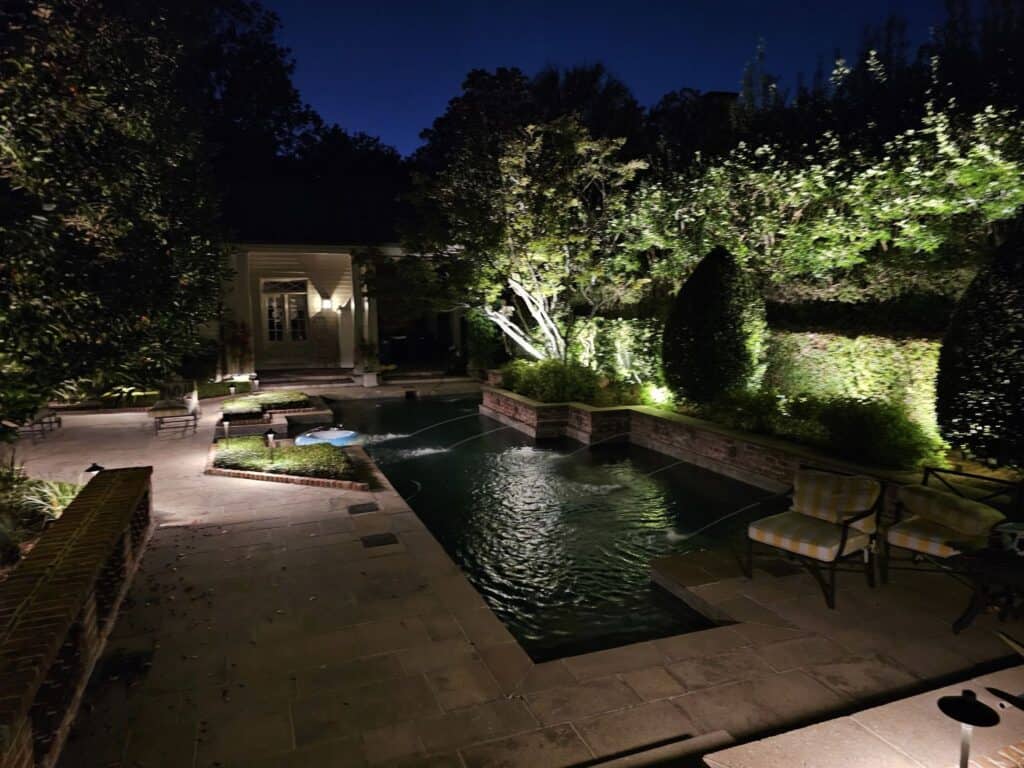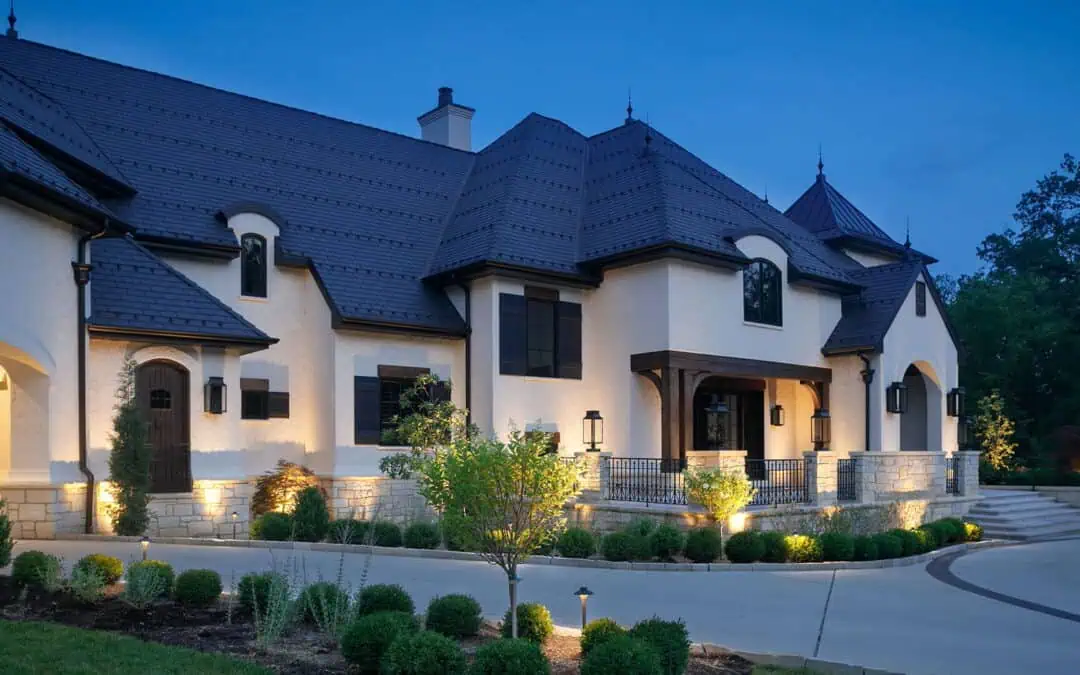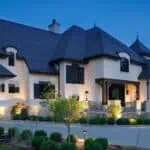Outdoor areas can quickly go from inviting to unpredictable once daylight disappears. Even familiar surroundings take on new risks when visibility fades. Accidents increase, property lines become unclear, and visitors or family members may struggle to move safely. Professionally designed landscape lighting improves the way people navigate and interact with exterior spaces after dark, reducing hazards while enhancing overall peace of mind.
1. Illuminated Walkways Prevent Common Trips
Poorly lit walkways often cause missteps and falls, particularly where textures change or roots push up pavement. Reliable lighting along these routes helps people maintain awareness and stability while walking at night. Professionals select fixtures that deliver balanced coverage without blinding brightness.
-
Lights bring attention to elevation shifts and uneven surfaces
-
Consistent illumination helps avoid stumbles in transitional spaces
-
Strategic fixture placement keeps paths visible through all seasons
2. Driveway Lighting Clarifies Shared Spaces
Driveways are used frequently and often involve multiple users—residents, pets, delivery personnel, and guests. Lack of adequate lighting makes these areas harder to navigate safely. A tailored lighting plan brightens the space while avoiding harsh glare that can affect night vision.
-
Highlights edges, walls, and transitions between surfaces
-
Allows easier detection of pets or small objects on the ground
-
Guides vehicles through curved or narrow entrances with better precision
3. Step Lighting Enhances Stability on Stairs
Outdoor stairs become tricky to manage when they blend into their surroundings after sunset. When poorly lit, they’re one of the most common places for falls. Lighting specialists install low-wattage fixtures that define each step without casting deep shadows.
-
Enhances the visual contrast between stair treads and risers
-
Helps visitors move more confidently through multi-level patios or porches
-
Supports safe use during rain, snow, or other challenging weather conditions
4. Entryway Lighting Reinforces Security and Comfort
Front doors and access points deserve special attention during evening hours. Whether unlocking the door, checking a peephole, or receiving a late delivery, visibility matters. Entry lighting creates a welcoming feel while making it easier to respond safely to unexpected activity.
-
Makes locks, doorbells, and cameras easier to use
-
Deters potential intruders by removing concealment zones
-
Enhances the homeowner’s view of approaching visitors
5. Perimeter Lighting Strengthens Property Oversight
Unlit perimeters can become hiding places or entry points for intruders. Proper lighting along fences, hedgerows, or retaining walls increases the sense of enclosure and surveillance. Professionals space fixtures methodically to minimize blind spots while keeping visual impact subtle.
-
Marks property boundaries in a consistent, readable way
-
Lights up areas that may otherwise be missed by security systems
-
Increases nighttime awareness without creating a harsh or industrial feel

6. Motion-Activated Lights Respond to Activity
Lighting that switches on with motion detection can discourage suspicious behavior and reduce electricity usage. Well-calibrated systems don’t trigger for every breeze or passing animal—they react to meaningful movement in critical areas.
-
Alerts property owners to sudden activity near doors or walkways
-
Creates a sense of unpredictability for potential trespassers
-
Blends with fixed lighting to maintain both energy efficiency and coverage
7. Emergency Lighting Keeps Routes Clear in Outages
Power failures can quickly turn even familiar outdoor areas into potential danger zones. Backup lighting options, like solar-powered or battery-supported fixtures, maintain illumination where it’s needed most. These additions become crucial in storm-prone or remote locations.
-
Keeps walkways, staircases, and exits accessible during outages
-
Assists anyone on the property in staying oriented and calm
-
Helps avoid accidents during evacuations or unplanned blackouts
8. Exterior Lighting Supports Emergency Personnel Access
First responders need fast, accurate access to properties in urgent situations. If addresses or pathways aren’t clearly visible, they lose time navigating. Professional lighting systems brighten key access points and visual identifiers, aiding navigation in high-stress conditions.
-
Makes house numbers and mailbox labels easier to identify at night
-
Guides emergency teams to side gates, entrances, and utility zones
-
Ensures fences and walls are not mistaken for accessible paths
9. Business Lighting Minimizes After-Hours Liability
Commercial properties are often accessed after hours, and dim lighting can lead to both accidents and break-ins. Lighting designed for commercial settings improves safety while matching the layout and tone of the property.
-
Brightens high-traffic zones such as loading docks or entrances
-
Reduces potential injury claims from visitors or employees
-
Complies with many zoning and insurance requirements for outdoor lighting
10. Pool and Patio Lighting Promotes Safer Social Areas
Entertainment zones like pools, hot tubs, and fire pits become risky if users can’t see clearly. Slippery decking, unexpected edges, and unlit steps can create hazards during nighttime gatherings. Professional lighting solutions maintain visibility without disrupting the atmosphere.
-
Keeps waterline edges and walkways visible during nighttime use
-
Illuminates uneven surfaces where guests often gather or relax
-
Prevents accidents without overwhelming the mood or design aesthetics

Key Takeaways on the Safety Role of Landscape Lighting
Professionally installed landscape lighting is about more than beauty—it’s about building confidence and control into how people move through outdoor spaces. With increased clarity on steps, entrances, and boundaries, lighting becomes part of a property’s safety framework. Whether the goal is to protect a business or simply move around a backyard without worry, strategic lighting plays a crucial role in reducing risk.
Frequently Asked Questions
What separates professional lighting from DIY solutions?
Professionals assess spacing, electrical safety, and fixture types to ensure consistent coverage. They also prevent common issues like glare, dark spots, or electrical overloads.
Is motion lighting better than constant light for security?
Motion-based lighting creates surprise and draws attention, which can stop suspicious behavior. It’s especially useful in areas where constant light would be excessive.
Does outdoor lighting need maintenance to stay effective?
Yes. Over time, bulbs dim, sensors misalign, or fixtures shift due to weather. Annual inspections help maintain performance and safety.
Can lighting help with code compliance?
Absolutely. Many residential and commercial codes include outdoor lighting requirements—especially around parking, emergency access, and signage visibility.
How long do professionally installed systems last?
Many systems using LED technology can last over a decade with minimal maintenance. Components designed for weather exposure hold up well in all seasons.
Louisiana News Post provides expert advice on home and garden services like gardening, landscaping, hardscaping, renovating, remodeling, roofing, HVAC, and interior design to help readers create their dream spaces. Their practical tips and creative solutions are inspired by years of hands-on experience and a commitment to affordable living. Whether you’re a seasoned handyman or just starting to explore home improvement, Louisiana News Post’s articles are a reliable resource for innovative ideas and detailed guidance.








